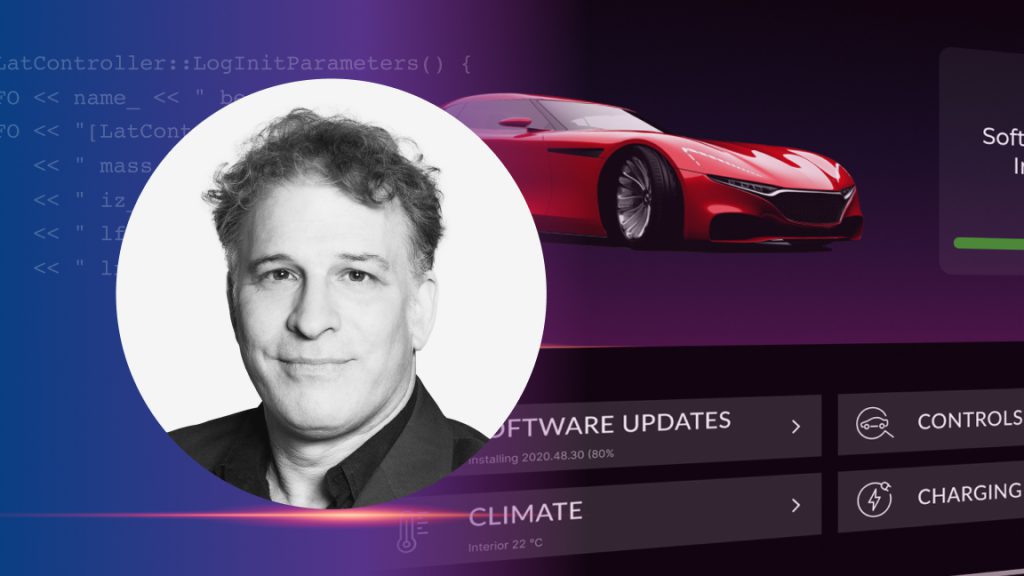Virtually every vehicle that is put out into the market is equipped with almost a hundred ECUs, millions of lines of code, and a slew of technical capabilities. These innovations are making cars around the world more secure and drastically improving the user experience.
Data connectivity is fueling vehicle electrification and automation and is the force that drives value for both OEMs and drivers. Data enables infotainment services including location intelligence and media, but also remote diagnostics, EV services, safety and emergency services, and predictive maintenance. My favorite connected car data use case is Innovative Insurance as suggested by otonomo – enabling models such as pay-as-you-drive (PAYD) and pay-how-you-drive (PHYD) usage-based insurance.
The ability to deliver Over-the-Air Updates is arguably one of the most important benefits of connected vehicles. Tesla uses Over-the-Air updates to add functionality ranging from in-car driver monitoring to automated seat heaters! Impressingly, Xpeng a leading Chinese smart electric vehicle company has cumulatively released 23 OTA updates for G3 and P7 users over a 15 month period, with 134 new functions added and 2,326 functions optimized for a total of 380,000 updates.
As data transmission becomes crucial to recognizing the in-vehicle technology benefits, the question arises: how much data does each vehicle require and what are the costs?
According to a new Guidehouse Insights report, the cost of data transmission for a 10-million vehicle fleet can reach over 20 PB of data and cost over $1 Billion, every year!
If we look at an individual ECU for example, for an in-vehicle infotainment system (IVI) update, the file size can be 500MB per vehicle, per update, on average. BMW recently updated 1 million vehicles’ IVI systems with file sizes ranging from 0.8GB to 1.2GB. Smaller ECU, such as seat memory or ambient lighting, running AutoSAR can have file sizes from 0.4MB to 2MB. For an average of one update every quarter and millions of vehicles in a fleet, the data transmission costs can quickly become astronomical.
Naturally, a fleet of millions of vehicles will be spread globally – adding another layer of complexity to the calculations: the costs of data around the world.
Based on an analysis by Spendemont, data costs per country can vary by over 99%! The country with the steepest cost of mobile data is Zimbabwe where 1GB can cost up to $75.20, and the country with the lowest costs is India where 1GB will cost a mere $0.26.
The average price of 1 GB of mobile data worldwide is $8.53. Here’s a comparison of select countries:
| Country | Average cost of 1GB |
| Greece | $32.71 |
| South Korea | $15.12 |
| Norway | $13.21 |
| United States | $12.37 |
| Belgium | $12.30 |
| Canada | $12.02 |
| China | $9.89 |
| Japan | $8.34 |
| Mexico | $7.38 |
| Germany | $6.96 |
| United Kingdom | $6.66 |
| Saudi Arabia | $5.62 |
| Spain | $3.97 |
| Sweden | $3.66 |
| Brazil | $3.50 |
| Argentina | $3.05 |
| France | $2.99 |
| Australia | $2.47 |
| Turkey | $2.25 |
| Italy | $1.73 |
| Finland | $1.16 |
| Russia | $0.91 |
| India | $0.26 |
Check out the very cool interactive map on Spendemon for more details.
With 5G cellular networks now being rolled out, it is possible that the cost of cellular data transmissions will come down however this will likely be counterbalanced by the number of OTA updates performed per vehicle each year as vehicle development becomes more agile and CI/CD methodologies are adopted.
But there is hope. OTA updates can become more frequent and stable while reducing costs by 98% thanks to Aurora Labs’ Line-of-Code update technologies.
Our update files, built on intimate knowledge of the lines-of-code, their changes, dependencies and behavior, reduce file sizes from 500 MB down to 15MB and drop the projected costs from over a billion to just over $30 million. Try our OTA Update Cost Simulator to see and compare what data costs can be, based on a few factors such as file size, number of ECUs and fleet size.






 11 min read
11 min read
